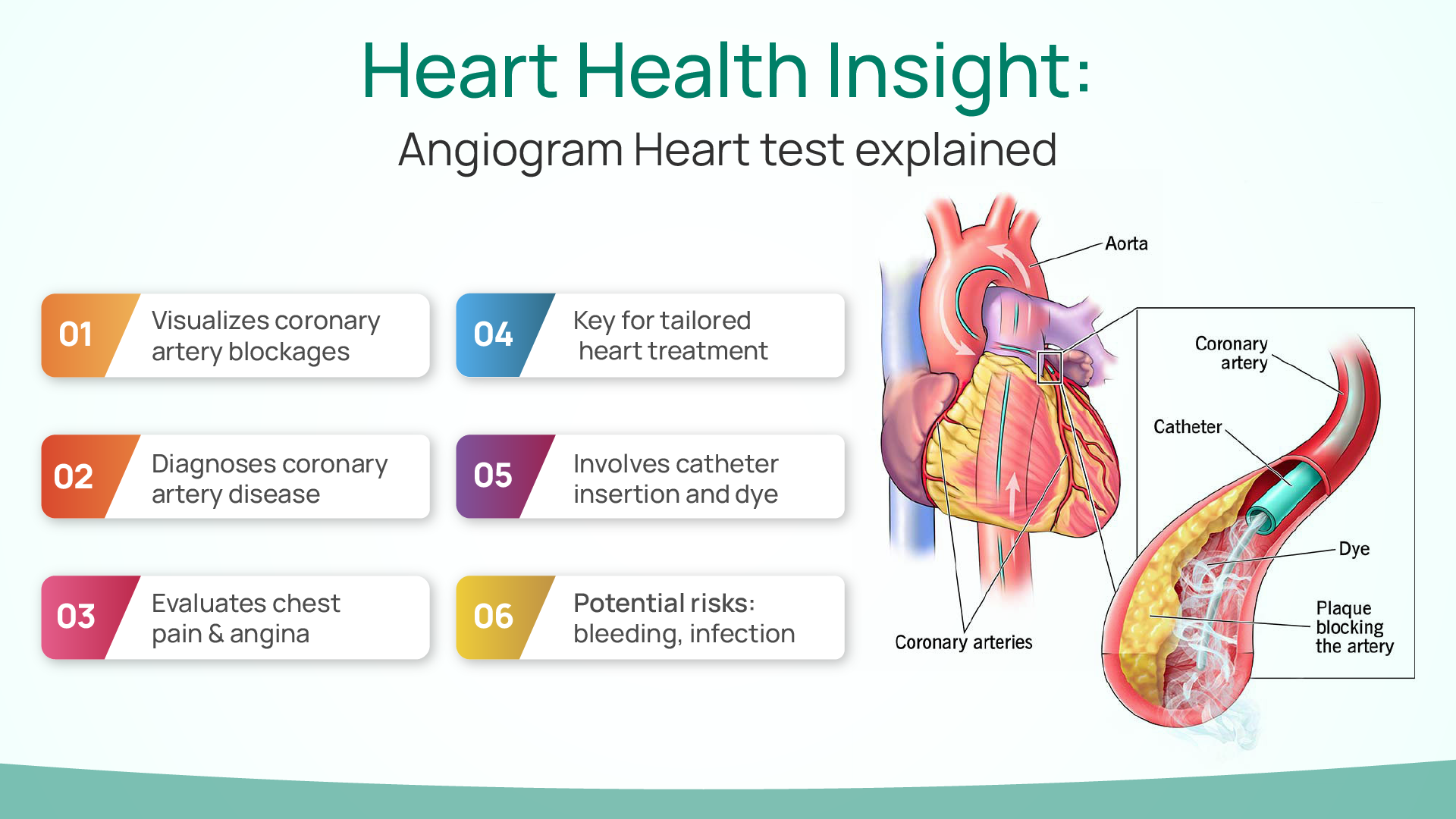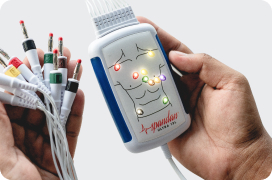
Author:- Mr. Ritesh Sharma
In the domain of cardiac care, the angiogram heart test is of great importance. When it comes to the heart, there is a plethora of screening tests that are done to detect many abnormalities ranging from heart palpitations to cardiac arrhythmias. These abnormalities are detected by abnormal ECG or electrocardiogram, echocardiogram, blood tests, etc. One of these pivotal screening tests is an angiogram heart test. This test is arguably the most complex one out of all the aforementioned tests.
However, understanding it is important for chronic heart patients, their loved ones, and healthcare professionals. Since it is an invasive test, it takes a lot of effort from the healthcare professionals and the patient to ensure its seamless completion.
In this blog, we will explain the angiogram heart test in its entirety. This includes its basic definition, why it is performed, how it is performed, risks and complications, significance, and advances. Therefore, to perform an angiogram heart test immaculately, find all relevant information from this blog.
What is an Angiogram Heart Test?
An angiogram heart test, also known as coronary angiography or cardiac catheterization, is a medical imaging technique used to visualize the blood vessels of the human heart. This procedure provides detailed images of the coronary arteries, enabling doctors to identify any blockages, narrowing, or other abnormalities that might impede blood flow to the heart muscle.
Why is an Angiogram Heart Test Performed?
The primary purpose of an angiogram is to diagnose and evaluate conditions affecting the coronary arteries. These conditions include:
- Coronary Artery Disease (CAD): Angiograms are crucial in diagnosing CAD, a condition where plaque builds up inside the coronary arteries, restricting blood flow to the heart muscle.
- Chest Pain (Angina): If a patient experiences unexplained chest pain, an angiogram can help determine if reduced blood flow in the coronary arteries is the cause.
- Heart Attack: After a heart attack, an angiogram can help identify the location and severity of blockages in the coronary arteries.
- Heart Valve Problems: It can also assist in evaluating the heart valves that prevent the backflow of blood to the heart and the blood flow through the chambers of the heart.
- Congenital Heart Disease: In cases of congenital heart anomalies, an angiogram helps in assessing the nature and extent of the abnormalities.
How is an Angiogram Heart Test Performed?
An angiogram heart test is usually performed in a hospital’s catheterization laboratory (cath lab). Here’s a step-by-step overview of the procedure:
- Preparation: Before the procedure, patients are asked to fast for several hours. They are typically given a mild sedative to help them relax, but they remain awake during the angiogram.
- Insertion of Catheter: The procedure starts with the insertion of a thin, flexible tube called a catheter into a blood vessel. This is usually done through an artery in the groin, wrist, or arm. The area is numbed with a local anesthetic.
- Guiding the Catheter: Using X-ray imaging, the cardiologist guides the catheter through the blood vessels to the coronary arteries. A special dye (contrast material) is then injected through the catheter into the bloodstream.
- Imaging: The dye makes the coronary arteries visible on X-ray images. These images, known as angiograms, show the flow of blood through the arteries and highlight any blockages or abnormalities.
- Evaluation: The cardiologist examines the angiograms to assess the condition of the coronary arteries. If significant blockages are found, they may decide to perform an angioplasty or place a stent to open the artery during the same procedure.
- Completion: Once the evaluation is complete, the catheter is removed, and pressure is applied to the insertion site to prevent bleeding. In some cases, a closure device may be used to seal the puncture site.
Risks and Complications
Despite being an invasive procedure, an angiogram heart test is normally considered safe. However, it still has some risks and complications:
- Bleeding or bruising: At the catheter insertion site.
- Allergic reactions: To the contrast dye.
- Cardiac Arrhythmias: Abnormal heart rhythms.
- Infection: At the puncture site.
- Kidney damage: Due to the contrast dye, particularly in patients with pre-existing kidney problems.
- Heart attack or stroke: Though rare, these serious complications can occur.
Recovery After an Angiogram Heart Test
Recovery from an angiogram is usually quick. Patients are often able to go home the same day, though some may need to stay overnight for observation, especially if an angioplasty or stenting was performed. Here are a few post-procedure guidelines:
- Rest: Patients are advised to rest and avoid strenuous activities for a few days.
- Hydration: Drinking plenty of fluids helps flush the contrast dye from the body.
- Wound Care: Keeping the catheter insertion site clean and dry is essential to prevent infection.
- Follow-Up: Patients should follow up with their cardiologist to discuss the results and any further treatment or lifestyle changes needed.
The Significance of Angiograms in Heart Health
Angiograms are instrumental in the early detection and management of coronary artery disease. Early diagnosis can lead to timely intervention, such as lifestyle changes, medications, or surgical procedures that can significantly improve outcomes and quality of life for patients with heart disease.
Moreover, the data obtained from angiograms help in tailoring personalized treatment plans. For instance, the precise location and severity of blockages guide the decision-making process regarding the necessity and type of intervention, whether it be medication, angioplasty, stenting, or coronary artery bypass surgery.
Advances in Angiography
Technological advancements have continually improved the safety and efficacy of angiograms. Innovations such as the use of radial artery access (wrist) instead of the femoral artery (groin) have reduced complications and improved patient comfort. Additionally, advancements in imaging techniques have enhanced the clarity and detail of angiograms, allowing for better diagnosis and treatment planning.
In conclusion, the angiogram heart test is important for the detection of serious heart abnormalities. It is important for the healthcare professional to perform it meticulously, ensuring the patient is clear of all kinds of harm. Furthermore, patients must identify their heart disease and then consult their healthcare professional before opting for this procedure.





